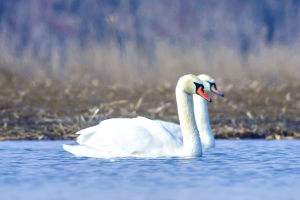Kingfishers are medium-sized water birds belonging to the genus Kingfisher. They have emerald blue feathers on their back and chestnut brown feathers on their abdomen. The kingfisher has a light-colored horizontal spot on the top of its head, and its beak and feet are red.
From a distance, kingfishers look similar to woodpeckers due to the emerald blue feathers on their back and faces.
To help you better understand kingfishers, we have compiled some popular scientific knowledge about them. The Asia-Pacific region is the largest settlement of kingfishers in the world, and it has more species than any other place.
The highest diversity of kingfishers is found on the islands of Southeast Asia and Oceania, with New Guinea and nearby islands as the core. This is because different species evolved in relative isolation on these different islands. Some widely distributed species have also evolved different subspecies in these areas.
Kingfishers in the Asia-Pacific region have the highest diversity in terms of morphology and habits. Their habitat is diverse, including forests, especially tropical rainforests, savannas, freshwater waters, and bay areas, especially mangrove areas.
Adult male and female common kingfishers are so similar in plumage that they are indistinguishable to the eye, the only difference being the color of their beaks.
Both the upper and lower bills of the male are black, while the upper bill of the female is black and the lower bill is orange-red. The main difference between subadult and adult kingfishers is the color of their beaks and feet; the former have black beaks and feet.
The common kingfisher has a large head, a long beak, short legs, small feet, and a bald tail. They are not good at walking and flying, but are masters of diving and fishing, and are veritable "fishermen."
Instead of hovering in the air in search of prey like birds of prey, they anchor in one place and wait for prey to appear. The kingfisher's body does not move, and its head can turn 360 degrees to observe prey and natural enemies in all directions.
Kingfishers are solitary birds that usually live alone on branches or rocks near the water, patiently observing and waiting for opportunities to hunt. Their food mainly consists of small fish, crustaceans, various aquatic insects and their larvae, small frogs, and a small number of aquatic plants.
Kingfishers maintain excellent eyesight after diving into the water. Their eyes can quickly adjust to the visual contrast caused by light in the water after entering the water, making their fishing ability very strong.
In spring and summer, kingfishers dig holes in the steep river banks to build their homes. The holes dug by kingfishers can sometimes be as deep as 2.5 meters. When the female kingfisher digs a hole, the male kingfisher will bring the fish, and they cooperate very tacitly.
Kingfishers can also use their thick and big beak to make a nest on earth cliffs. Sometimes, they also nest in the tunnels of field dikes. There is generally no bedding at the bottom of the cave, and the eggs are laid directly on the nest floor.
After building the nest, kingfisher couples start preparing to have offspring, and each nest can hold up to four or five eggs. The incubation period for kingfishers is about 21 days. Both sexes incubate the eggs, but only the female feeds the chicks.


